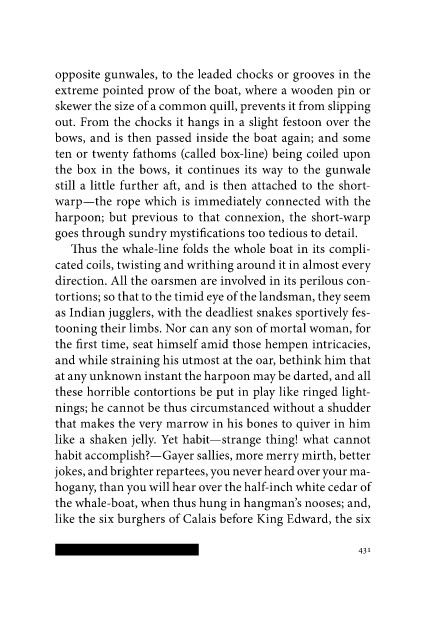Page 432 - moby-dick
P. 432
opposite gunwales, to the leaded chocks or grooves in the
extreme pointed prow of the boat, where a wooden pin or
skewer the size of a common quill, prevents it from slipping
out. From the chocks it hangs in a slight festoon over the
bows, and is then passed inside the boat again; and some
ten or twenty fathoms (called box-line) being coiled upon
the box in the bows, it continues its way to the gunwale
still a little further aft, and is then attached to the short-
warp—the rope which is immediately connected with the
harpoon; but previous to that connexion, the short-warp
goes through sundry mystifications too tedious to detail.
Thus the whale-line folds the whole boat in its compli-
cated coils, twisting and writhing around it in almost every
direction. All the oarsmen are involved in its perilous con-
tortions; so that to the timid eye of the landsman, they seem
as Indian jugglers, with the deadliest snakes sportively fes-
tooning their limbs. Nor can any son of mortal woman, for
the first time, seat himself amid those hempen intricacies,
and while straining his utmost at the oar, bethink him that
at any unknown instant the harpoon may be darted, and all
these horrible contortions be put in play like ringed light-
nings; he cannot be thus circumstanced without a shudder
that makes the very marrow in his bones to quiver in him
like a shaken jelly. Yet habit—strange thing! what cannot
habit accomplish?—Gayer sallies, more merry mirth, better
jokes, and brighter repartees, you never heard over your ma-
hogany, than you will hear over the half-inch white cedar of
the whale-boat, when thus hung in hangman’s nooses; and,
like the six burghers of Calais before King Edward, the six
1

